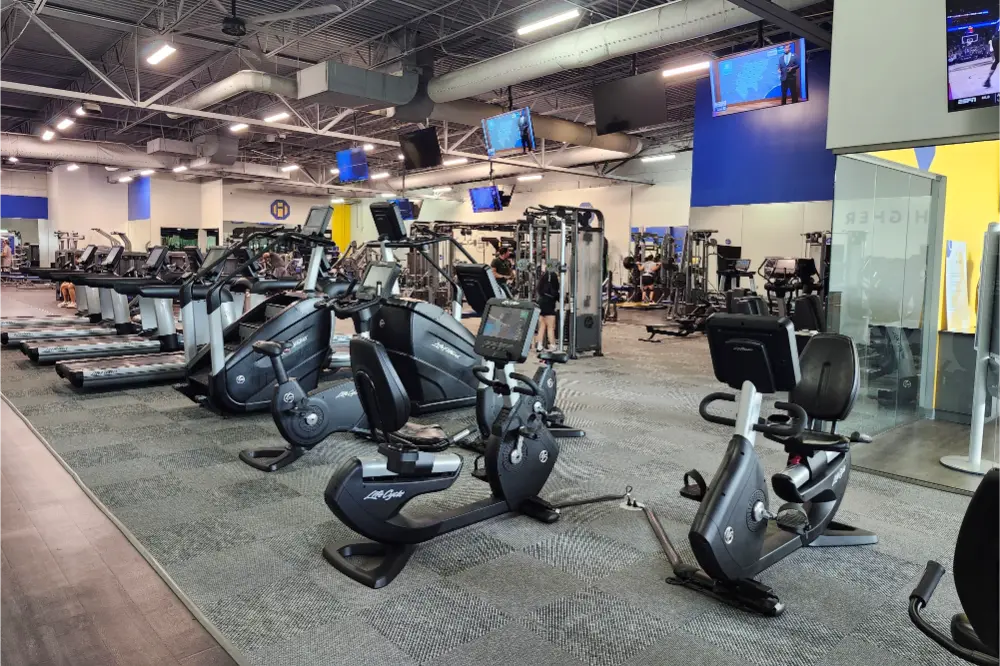There are countless methods and strategies to help you reach your goals. But among the sea of options, two popular and highly effective workout styles stand out: HIIT (High-Intensity Interval Training) and Tabata. These dynamic and intense forms of exercise have gained immense popularity for their efficiency in burning calories, improving cardiovascular health, and boosting overall fitness levels. Today, we’re diving into a detailed comparison of HIIT vs. Tabata to help you understand the nuances of each and determine which may be the best fit for your fitness journey.
What is HIIT?
HIIT is a workout style that packs a powerful punch in a short amount of time. This training method involves alternating between short bursts of intense exercise and brief periods of rest or low-intensity activity. The beauty of HIIT lies in its efficiency – you can torch calories and improve your fitness in a fraction of the time compared to traditional steady-state cardio.
Typically lasting anywhere from 30 to 60 minutes, HIIT workouts are known for their high intensity and heart-pumping intervals. During the exercise intervals, you push yourself to work at 80-95% of your maximum heart rate, giving it your all for a short period of time. This is followed by rest intervals or lower-intensity activities to help you recover before the next round of high-intensity work.
Some common examples of HIIT exercises include sprinting for 30 seconds followed by 1 minute of walking, or cycling at a high intensity for 45 seconds followed by 1 minute of slow pedaling. These quick bursts of effort followed by active recovery keep your heart rate elevated and metabolism revved up, making HIIT a time-efficient and effective way to burn calories and improve cardiovascular fitness. HIIT is all about pushing your limits, challenging your body, and reaping the benefits of a high-intensity workout in a short amount of time.
What is Tabata?
Tabata is a type of High-Intensity Interval Training (HIIT) that takes intensity to the next level. Developed by Dr. Izumi Tabata, this workout protocol follows a specific structure: 20 seconds of all-out, ultra-intense exercise followed by a short 10-second rest period. This cycle is repeated for a total of 8 rounds, resulting in a complete round of Tabata lasting just 4 minutes.
The hallmark of Tabata is its extreme intensity. During the 20-second exercise intervals, participants are encouraged to give it their all and work at maximum effort, aiming to reach 100% of their maximum heart rate. This push for peak performance in such a short time frame is what sets Tabata apart and makes it a challenging but effective workout choice.
Examples of exercises commonly incorporated into Tabata workouts include burpees, mountain climbers, or high knees. These movements are performed with maximum intensity for 20 seconds, pushing your limits and testing your endurance, followed by a brief 10-second rest to catch your breath before diving back in. The quick, intense nature of Tabata workouts makes them a popular choice for those looking to maximize their workout in minimal time and experience the benefits of high-intensity training.
Key differences
When it comes to comparing HIIT and Tabata, several key differences set these high-intensity workout styles apart. Let’s break down the distinct characteristics that differentiate the two:
- Structure: HIIT offers more flexibility in terms of interval length and intensity, allowing for customization based on individual fitness levels and goals. On the other hand, Tabata follows a strict structure of 20 seconds of intense exercise followed by 10 seconds of rest, repeated for 8 cycles. This rigid format challenges participants to give their all during each ultra-intense interval.
- Duration: HIIT workouts can vary in length, typically ranging from 30 to 60 minutes, depending on the workout structure and intensity levels chosen. In contrast, a Tabata workout is concise and intense, lasting up to 20 minutes. While HIIT sessions can be shorter or longer based on preference, Tabata offers a quick and efficient way to get a high-intensity workout in a short amount of time.
- Intensity: One of the defining features of Tabata is its requirement for maximum effort during the active intervals. Participants are encouraged to push themselves to their limits and aim for 100% of their maximum heart rate during each 20-second burst of exercise. In comparison, HIIT allows for a range of high intensities, making it adaptable to different fitness levels and preferences. While both styles emphasize intensity, Tabata takes it to the extreme with its focus on all-out effort in each short interval.
Final thoughts
When it comes to choosing between HIIT and Tabata, the most important factor to consider is what works best for you and your fitness goals. Whether you prefer the flexibility and variety of HIIT or the structured intensity of Tabata, both workout styles offer effective ways to challenge your body, boost your fitness levels, and burn calories in a short amount of time. The key is to find a workout routine that you enjoy and can stick with consistently to see long-lasting results.
If you’re feeling adventurous and up for a challenge, why not give both HIIT and Tabata a try to see which one resonates with you the most? By experimenting with different workout styles, you can discover what pushes you to new limits, keeps you motivated, and helps you achieve your fitness aspirations.
Whichever you choose, you’ll definitely need a recovery session. See why red light therapy is a great recovery-enhancing choice of many gym-goers.
If you’re looking to experience the power of instructor-led HIIT workouts in Sanford, claim a 3-day free pass at HiTone Fitness. Our expert instructors will guide you through high-energy, heart-pumping HIIT sessions designed to help you crush your fitness goals and unleash your full potential. Take advantage of this opportunity to try out our dynamic workouts at no additional cost and see firsthand the benefits of HIIT training.







